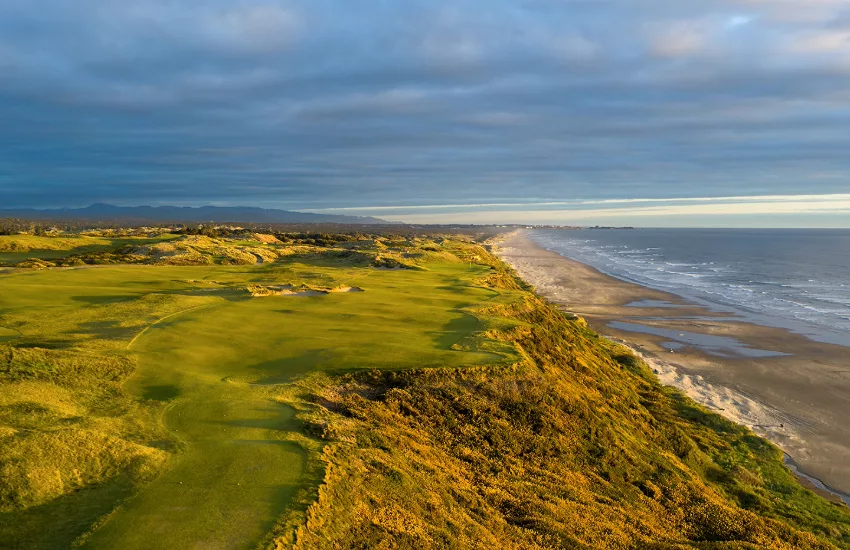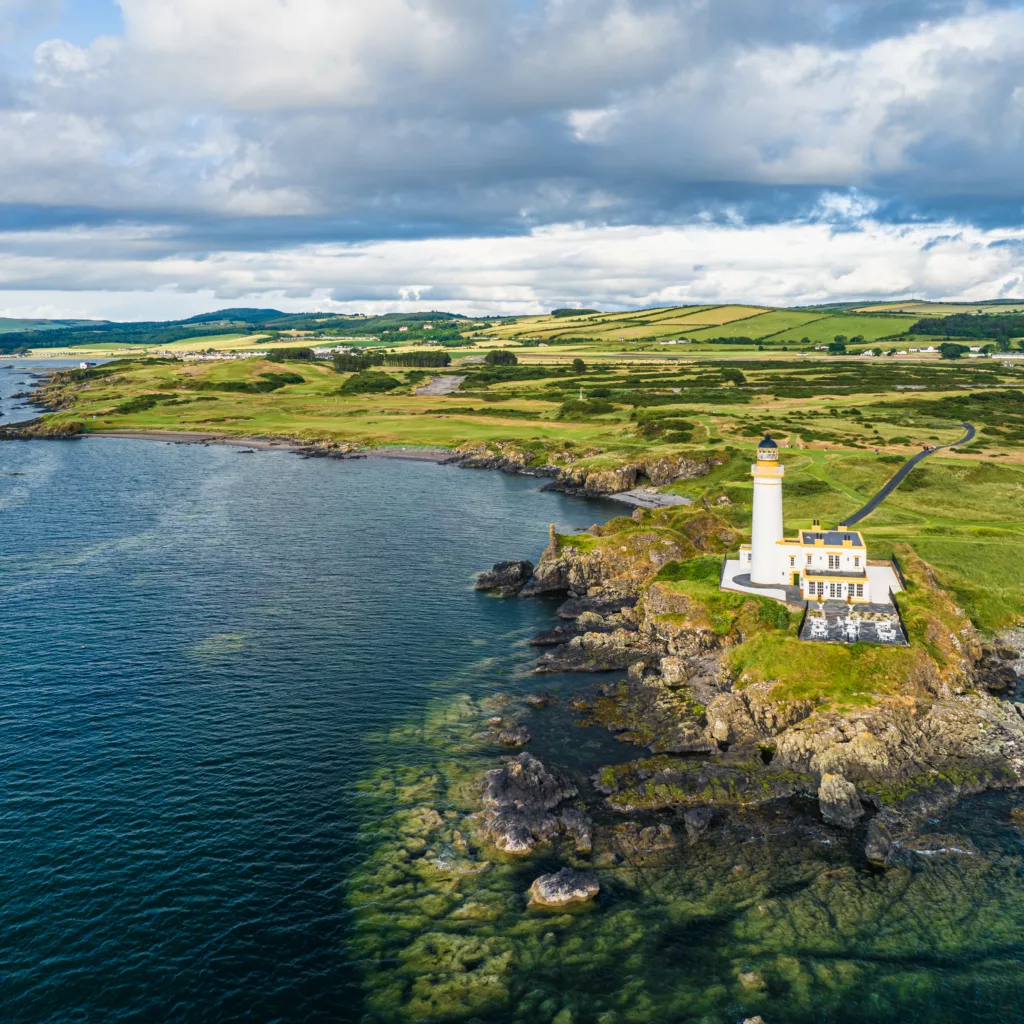
There are several different types of courses, but none match the historical significance and global recognition of a links style golf course. Links-style golf courses are deeply rooted in the tradition of the game and profound respect for the surrounding natural beauty.
The term “links” refers to the sandy, often dune-covered, coastal terrain where these courses were originally built. The word itself comes from the Old English word “hlinc,” meaning ridge or rising ground, which aptly describes the undulating landscape of these courses.
Links-style golf is believed to have originated in Scotland, where the game was played on the natural terrain that bordered the sea. The sandy soil, sparse vegetation, and unpredictable weather conditions posed unique challenges to golfers, shaping the characteristics of these early courses.
Features of a Links Style Golf Course

While true links courses are predominantly found across the pond in Scotland, Ireland, and England, some courses in the United States, such as those at Bandon Dunes in Oregon, are also considered true links courses. These courses replicate the authentic links experience, offering golfers a taste of traditional links golf without having to travel overseas.
A links style golf course boasts several distinctive elements that set it apart from other types of courses. Here are some of the most common features:
- Natural Terrain: Links courses have a fascinating origin story rooted in practicality. These courses are often found on sandy soil, which, back when golf was first played, was of little use to farmers. With no agricultural value, this sandy terrain became the perfect canvas for golf. A links style golf course is typically located near an ocean, lake, or other large body of water as well. They’re often characterized by undulating fairways, deep bunkers, and natural hazards like tall grasses and dunes, all blending seamlessly with the surrounding landscape. This natural terrain isn’t just for show; it’s an integral part of what makes links courses so unique and challenging to play.
- Sparse Vegetation: Unlike parkland courses, which are often lush and heavily wooded, links-style courses feature sparse vegetation, with few trees and shrubs. This allows for more open fairways and unobstructed views of the course.
- Bunkers: Links courses are renowned for their deep, revetted bunkers – fancy lingo for bunkers lined with layers of sod to create towering grass walls. You may also hear them more casually referred to as pot bunkers. At St. Andrews, arguably the best links style golf course in the world, you’ll encounter bunkers with names like ‘Hell,’ ‘The Principal’s Nose,’ and ‘The Coffins.’ If these names don’t give you a clue about the challenge they present, then nothing will!
- Wind: One of the defining characteristics of links golf is the presence of strong, often unpredictable winds blowing in from the sea. The wind is one of the most challenging aspects of links courses.
- Firm, Fast Greens: Links-style greens are typically firm and fast, with subtle slopes and contours that require precise rolls. You may find that green sizes are larger on links courses, too, but that doesn’t apply to all of them.
- Strategic Design: Links courses are playgrounds for golfers, especially if you’re a strategic player. We’re talking knockdown shits into 20mph winds, bump and runs across 100-yard wide greens. These are the kinds of shots that make a links style golf course a thrilling and rewarding experience, showcasing the creativity and skill required to score well.
Links Style Golf Course: Most Popular
Several links-style courses around the world are renowned for their beauty, challenge, and historical significance. Among the most famous are:




